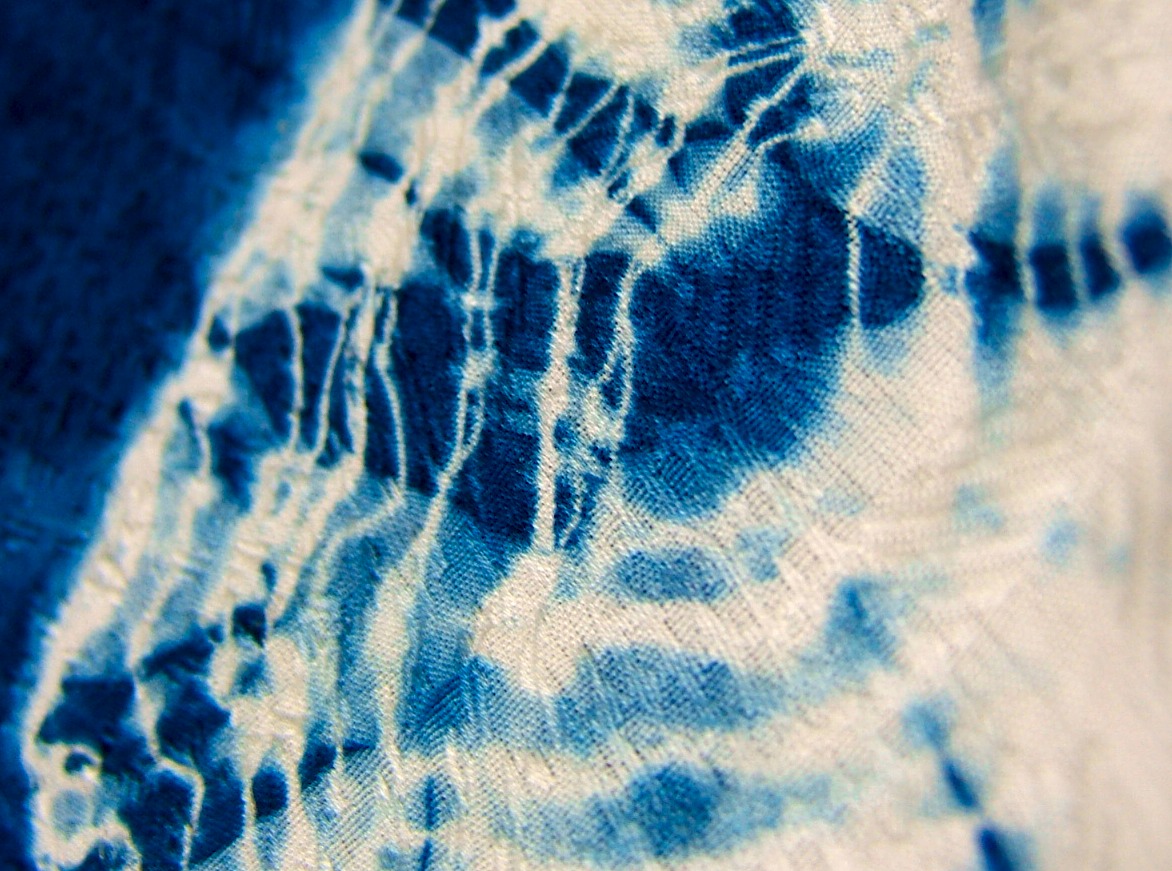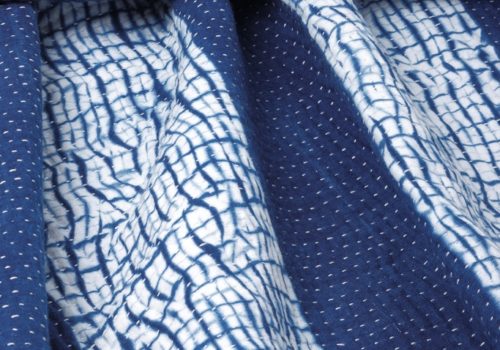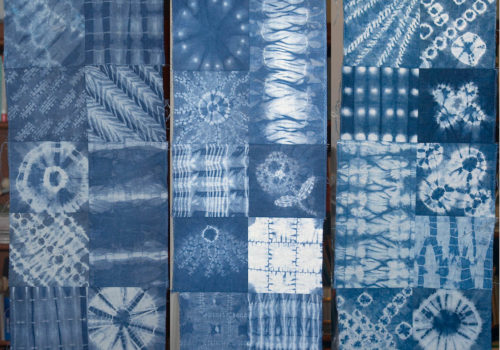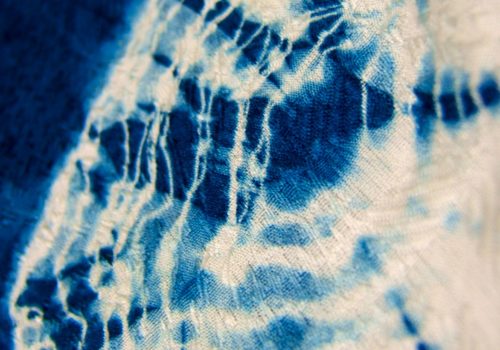Technique
Kanoko shibori
Kanoko shibori is what is commonly thought of in the West as tie-dye. It involves binding certain sections of the cloth to achieve the desired pattern. Traditional shibori requires the use of thread for binding. The pattern achieved depends on how tightly the cloth is bound and where the cloth is bound. If random sections of the cloth are bound, the result will be a pattern of random circles. If the cloth is first folded then bound, the resulting circles will be in a pattern depending on the fold used.
Miura shibori
Miura shibori is also known as looped binding. It involves taking a hooked needle and plucking sections of the cloth. Then a thread is looped around each section twice. The thread is not knotted; tension is the only thing that holds the sections in place. The resulting dyed cloth is a water-like design. Because no knot is used, miura shibori is very easy to bind and unbind. Therefore, this technique is very often used.
Kumo shibori
Kumo shibori is a pleated and bound resist. This technique involves pleating sections of the cloth very finely and evenly. Then the cloth is bound in very close sections. The result is a very specific spider-like design. This technique is very precise to produce this specific design.
Nui shibori
Nui shibori includes stitched shibori. A simple running stitch is used on the cloth then pulled tight to gather the cloth. The thread must be pulled very tight to work, and a wooden dowel must often be used to pull it tight enough. Each thread is secured by knotting before being dyed.
This technique allows for greater control of the pattern and greater variety of pattern, but it is much more time consuming.
Arashi shibori
Arashi shibori is also known as pole-wrapping shibori. The cloth is wrapped on a diagonal around a pole. Then the cloth is very tightly bound by wrapping thread up and down the pole. Next, the cloth is scrunched on the pole. The result is a pleated cloth with a design on a diagonal. "Arashi" is the Japanese word for storm. The patterns are always on a diagonal in arashi shibori which suggest the driving rain of a heavy storm.
Itajime shibori
Itajime shibori is a shaped-resist technique. Traditionally, the cloth is sandwiched between two pieces of wood, which are held in place with string. More modern textile artists can be found using shapes cut from acrylic or plexiglass and holding the shapes with C-clamps. The shapes prevent the dye from penetrating the fabric they cover.







8 thoughts on “Shibori”
Comments are closed.